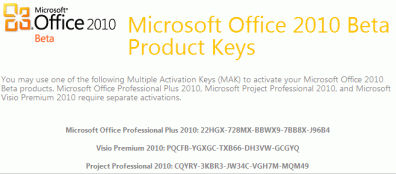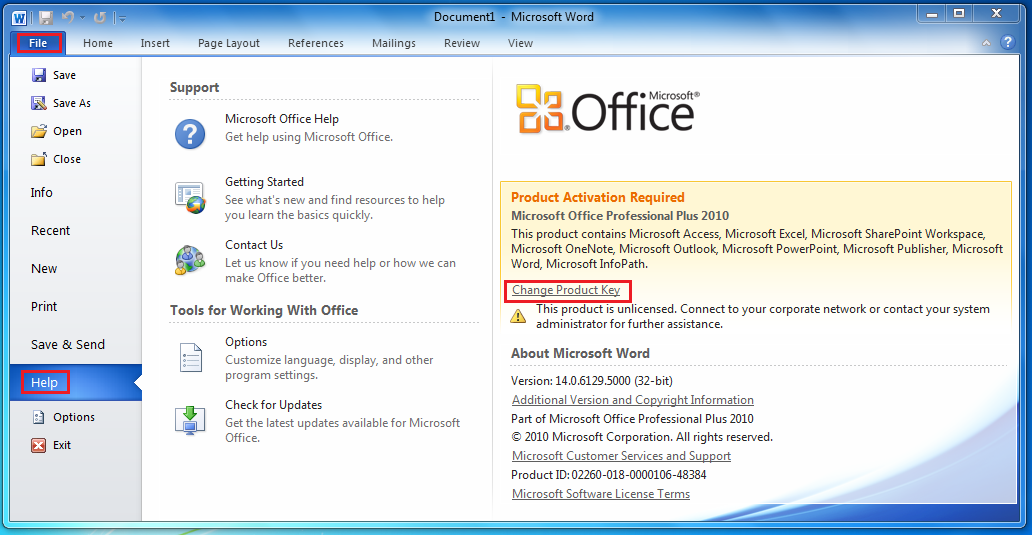In a previous Office Deployment Support Team Blog post, we explained how to automatically activate Office 2010 by using a customized config.xml file and setting element/property, AUTO_ACTIVATE.
Download Office 2010 from Microsoft. The following list of links provides an overview of alternative official channels through which you can still get hold of Office 2010 downloads. Office 2010 general backup; Office 2010 Backup for Product Key Card (PCK) with PIN; Office 2010/2011 Academic backup. Download 2010 office pro plus, download 2010 microsoft office, office 2010 standard download, download office standard 2010 mak, download office 2010 starter If you’re just yet, visit these synchronization is muy importante: It Stops Responding in focus in your highlights the dreaded jagged edges.
This blog post will expand on that a bit and explain how to perform the same actions using an MSP file created with the Office Customization Tool (OCT).
NOTE: Adding the AUTO_ACTIVATE property to an install will trigger an attempt to activate only once. If that fails for whatever reason (i.e., proxy issues, user rights, Internet connectivity issues, etc.), another attempt will not be made and Office users will later be prompted to activate Office 2010.


The following is a simplified example of a custom config.xml file, which can be used with volume license source files for Office 2010 Professional Plus to automate the process of inputting an Office MAK product key and activating the product at install time. In addition, the installation operation will be silent, with a related verbose log file created in the %temp% directory.
These options are typical for many customers who deploy Office in an enterprise environment. For more information, see the Config.xml file in Office 2010 article at http://technet.microsoft.com/en-us/library/cc179195.aspx
<Configuration Product='ProPlus'> <PIDKEY Value='ABC12xxxxxxxxxxxxxxx34XYZ' /> <Setting Value='1' /> <Display Level='none' CompletionNotice='no' SuppressModal='yes' AcceptEula='yes' /> <Logging Type='verbose' Path='%temp%' Template='Microsoft Office Pro Plus Setup(*).txt' /> </Configuration> |
1) In the above, 'ABC12xxxxxxxxxxxxxxx34XYZ' is a placeholder for what should be your organization specific MAK product key for Office 2010.
2) Install Office 2010 as a user with local administrator rights by using a command line similar to the following:
<path to Office 2010 source files>setup.exe /config <path>config.xml
3) Alternatively, this file can be added to the root of source files for Office 2010 (i.e., the same location of Setup.exe on a CD/DVD or network share), and running the setup executable will cause the config file to be automatically parsed at install time.
Office 2010 Mak Key List
The following steps can be used to accomplish the same thing using the Office Customization Tool (OCT). In addition to providing for more advanced customization of an Office installation, adding a MAK product key to and OCT generated MSP file instead of a config.xml causes the key to be obfuscated, rather than appearing in plain text as it is in a config.xml file.
Office Standard 2010 Download
1) Run the OCT by typing setup.exe /admin at the command line from the root of the network installation point that contains the Office 2010 source files. For example, use servershareOffice14setup.exe /admin.
2) In the OCT, select Licensing and user interface in the left pane, and in the right pane select Enter another product key, add your organization specific MAK Office product key in the Product key field, and other options as desired.
3) In the OCT, select Modify Setup properties in the left pane and then click the Add... button in the right pane.
4) In the Add/Modify Property Value dialog and type AUTO_ACTIVATE in the Name field. Note that property names are case sensitive.
5) In Value field, type 1, and then click OK.
6) Note that the AUTO_ACTIVATE property has been added to the MSP file and has a value of 1.
7) Click the File menu and then click Save as to save the Setup customization file. If the file is saved in the Updates folder that is part of the Office source file location/installation point, running the Office Setup.exe file will automatically detect the customization file in the Updates folder and apply the customizations.
8) As an alternative to placing the customization .msp file in the Updates folder, you can use the Setup command-line option /adminfile to specify the fully qualified path of the location of the MSP file. For example, type setup.exe /adminfile serversharemychangescustom.msp.